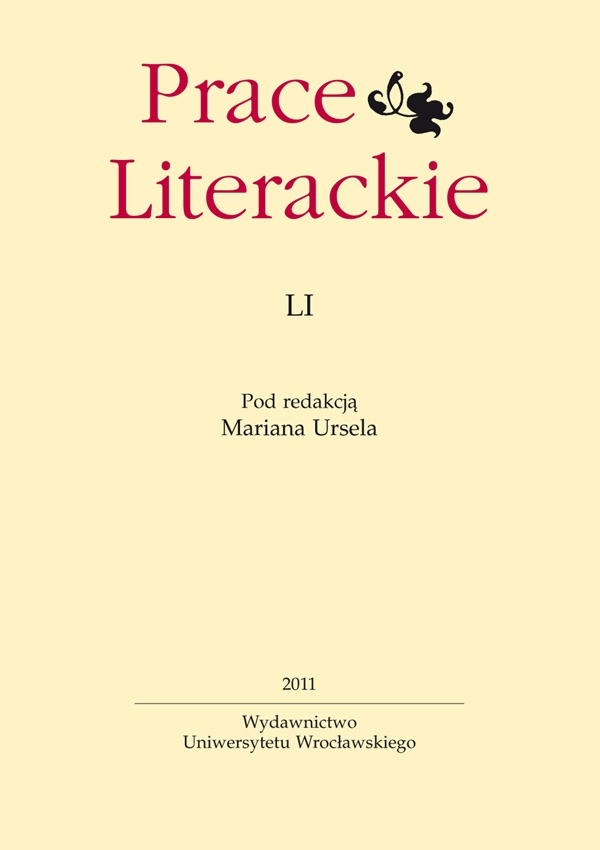Abstrakt
<p style="margin-bottom: 0cm; line-height: 150%; text-align: justify;"><strong>Reading as a source of anguish. Self-referencing and protagonists engrossed alive in Mary Shelly’s <em>Frankenstein</em></strong></p><p style="margin-bottom: 0cm; line-height: 150%; text-align: justify;"> </p><p style="text-align: justify;">The article is an attempt to develop and introduce into Polish literary studies a reflection on Frankenstein, sometimes interpreted – by foreign scholars – as a novel about writing and reading. Referring to, among others, the symbolism of the hybrid creature from Giuseppe Arcimboldi’s painting, the notion of intertextuality, feminist criticism Kazimiera Szczuka, Urszula Śmietana and remarks from Michele Turner’s If it be a monster birth:<em> Reading and literary property in Mary Shelley's “Frankenstein”</em>, the author examines the topic on three basic levels. The first concerns the primary relation between the writer and the text, with regard to which <em>Frankenstein</em> emerges as a partial reflection of Mary Shelley’s reading biography, also as a kind of “somatext” i.e. a literary testimony to reading one’s own corporeality – a work in the “cracks” of which, as Kazimiera Szczuka puts it, “hides [...] a tale of an inextricable link of persecution between the woman and her work born of flesh and writing, in madness and anguish”. In this part of her analysis, the author refers to a modern travesty of the story of writing<em> Frankenstein</em> – Federico Andahazi’s novel <em>The Merciful Women</em>. This is a point of departure for examining the subject of “writing and reading” on another level of interpreting Shelley’s work. The story of the “birth” of the Monster and its subsequent fate, not controlled by the Creator anymore, can be read, according to the author, as a reflection of the universal relation between the author, the text and the collective addressee, as a unique allegory of the act of creating a text and its reception in society as a result of which – due to reasons beyond the writer’s control – the text is sometimes turned into a “monstrosity”, with dangerous qualities being ascribed to it. The author also sees in the creation of the Monster-text of the novel a clear allusion to a toxic aspect of the Romantic reading culture. Thus the 19<sup>th</sup> century figure of the reading Monster become a model example of the anti-reader, combining attributes of both Romantic readers of <em>The Sorrows of Young Werther</em> and of the child, i.e. the figure which – in comparison with books – was best able to evoke a vision of danger resulting from a premature, unskilled contact of an inexperienced user with the world of literary fiction. In the case of all three narrators of the novel, the role of reading, strongly emphasised by Shelley, is a point of departure for reflections on the last level of interpreting <em>Frankenstein</em>, focusing on a broadly defined problem of education and upbringing. For it seems that by presenting the very similar first reading experiences of Robert Walton, Victor Frankenstein or the Monster, Shelly points to the main reasons why reading might become a source of anguish for the reader.</p>


